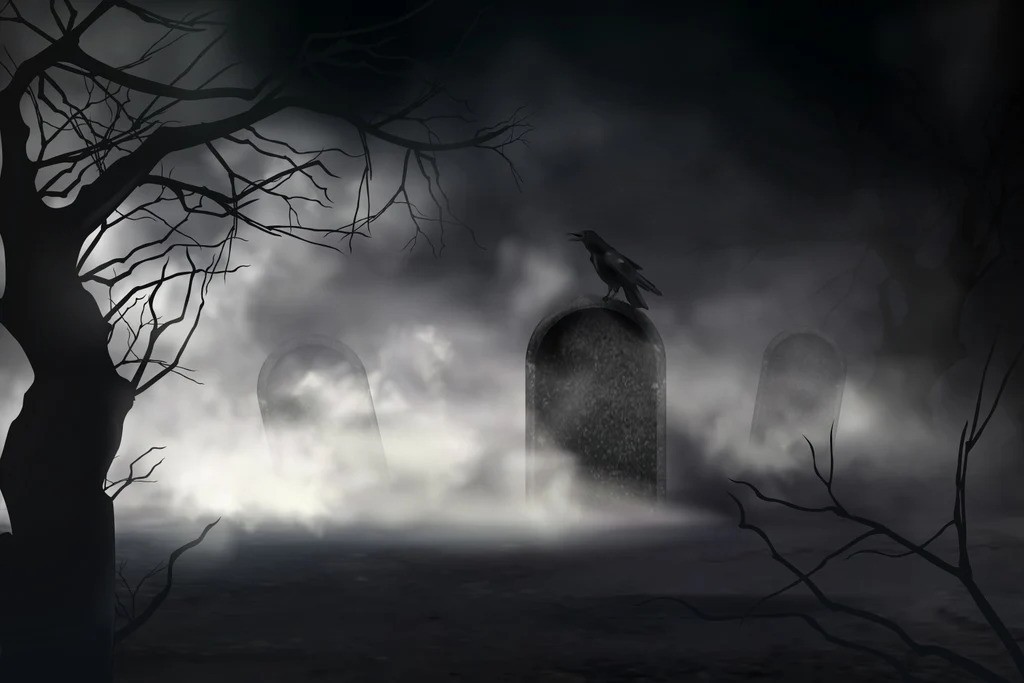By Nick Tyler | Host of The Hauntic Podcast
Author of “Parapsychology for Beginners” – Available on Amazon
Welcome to the World Between Worlds
If you’ve ever felt that chill crawl up your neck when a light flickers, or heard a whisper when you’re certain you’re alone — congratulations, you’ve already stepped into the territory that parapsychology tries to explore.
Welcome to Hauntic, where we balance one foot in science and the other in the shadows.
Tonight, we’re diving into the question that lies at the heart of nearly every ghost story, investigation, and unexplained encounter:
What exactly is parapsychology?
So, What Is Parapsychology?
At its core, parapsychology is the scientific study of phenomena that don’t fit neatly within our current understanding of psychology or physics. We’re talking about things like telepathy, psychokinesis, hauntings, apparitions, near-death experiences, and ESP — the kind of stuff that makes skeptics roll their eyes and believers nod knowingly.
But here’s the thing — parapsychology doesn’t ask you to blindly believe. It asks you to question, observe, and record. It’s about studying the weird with the same discipline that any scientist would bring to a lab.
So when a door slams shut or a cold spot lingers in an empty corridor, parapsychology steps in with a notebook instead of a crucifix. It’s about exploring the unknown without letting superstition cloud the data.
Why Parapsychology Matters
Now, you might wonder: “Nick, why bother with parapsychology at all? Why not just admit ghosts are either real or not and move on?”
Well, because human experience is far too fascinating for such simple answers.
Parapsychology matters because it bridges belief and evidence. It allows us to study why people experience hauntings, not just if they do.
It forces us to slow down and look carefully. When a chill fills a room, a researcher asks:
Is the temperature actually dropping, or is adrenaline heightening our senses?
When an EMF meter spikes, we don’t scream “ghost!” — we check the wiring, the Wi-Fi router, even the fridge.
It’s a discipline that respects the mystery while still demanding proof. And that’s a delicate balance most paranormal TV shows never quite manage to find.
For me, that’s the real magic of parapsychology — it keeps curiosity alive while keeping nonsense in check.
The Tools of the Trade
Ghost hunting has come a long way since the days of candlelight séances and creaky Ouija boards. These days, we’re armed with gadgets that beep, flash, and hum with the same intensity as a sci-fi lab.
But without a parapsychological lens, these tools are just toys.
Take the EMF meter, for example. When that needle jumps, it could mean something paranormal… or just that your mobile phone pinged the nearest tower. A parapsychologist uses it not as proof, but as a clue — one piece of a much bigger picture.
Then there are the cat balls — those glowing, motion-activated spheres you’ve probably seen lighting up in viral ghost-hunting videos. They’re great visual triggers, but again, a parapsychologist will test them scientifically: check for drafts, uneven floors, vibration. When all else is ruled out, only then does the question get interesting.
And of course, there’s the infamous spirit box. It sweeps through radio frequencies so fast that you hear snatches of words and static. Sometimes, it feels like something — or someone — is responding. The trick here is not to jump to conclusions, but to listen for patterns, repetition, or relevance. Is it coincidence, or communication? Parapsychology doesn’t decide for you — it helps you decide for yourself.
Even mysterious relics like Dybbuk boxes fall under this umbrella. Whether cursed object or elaborate prank, these items reveal as much about human psychology as they do about the paranormal. Fear, belief, suggestion — these are powerful forces that can shape what we perceive as “haunted.”
So when we say parapsychology studies the unknown, it’s not just about chasing ghosts — it’s about studying us, too.
Parapsychology in the Field
Let’s step into the field for a moment. Imagine an abandoned Victorian hospital. You’re walking through a corridor lined with peeling paint and the faint smell of damp air.
Your recorder is running. The EMF meter hums quietly in your hand. Then — a sudden chill. A flicker of light.
A skeptic would say: “Draft.”
A believer might say: “Spirit.”
A parapsychologist says: “Document it.”
You note the temperature, the time, the readings. You check nearby electrical sources. You log how everyone in the room felt in that moment. Then, later, you analyse.
It’s this disciplined curiosity — this balance between heart and head — that makes parapsychology such a fascinating lens for any ghost hunt.
It’s not about proving ghosts. It’s about understanding experience. And sometimes, that’s even more revealing.
A Glimpse at Real-World Parapsychology
Some of history’s most famous cases owe much to parapsychological thinking. The Enfield Poltergeist investigation in the late 1970s, for example, involved researchers who meticulously logged temperature drops, audio phenomena, and witness reactions.
Then there’s the Philip Experiment of 1972 — a group of Canadian researchers who attempted to “create” a ghost through sheer belief and concentration. And strangely enough, something seemed to respond.
What those cases prove isn’t necessarily the existence of spirits, but the power of human focus, energy, and expectation — all things parapsychology strives to understand.
Looking Ahead: The Future of Parapsychology
As we move deeper into the digital age, parapsychology is evolving.
Artificial intelligence, biometric sensors, and real-time environmental data now allow us to cross-reference emotional and physical responses to potential paranormal events.
It’s becoming less about ghost stories and more about data-driven exploration of consciousness, perception, and reality itself.
And that’s exactly why I’m thrilled to share that I’m currently developing an Entry-Level Parapsychology Course in collaboration with the Northern Psychical Research Centre. It’s designed for anyone — whether you’re a skeptic, a believer, or just someone who’s curious about what goes bump in the night.
Final Thoughts from the Field
So, what is parapsychology really? It’s curiosity with a clipboard. It’s the courage to walk into the dark not with fear, but with fascination.
It’s the part of ghost hunting that says, “Let’s understand before we believe.”
As a paranormal investigator, a writer, and a lifelong explorer of the weird, I see parapsychology not as an answer — but as an invitation. An invitation to think deeper, to look closer, and to never stop asking questions.
If you’ve enjoyed this dive into the science behind the supernatural, make sure to check out my book “Parapsychology for Beginners” — available now on Amazon — and tune into the Hauntic Podcast for more investigations, stories, and strange encounters from the world between worlds.
And remember: keep your EMF meters charged, your mind open, and your curiosity alive. Because sometimes, the truth hides right between the static.



